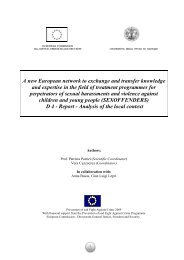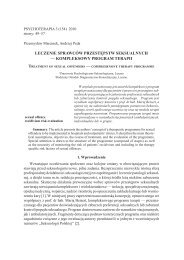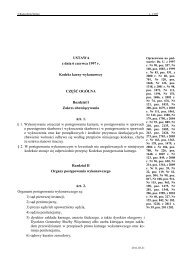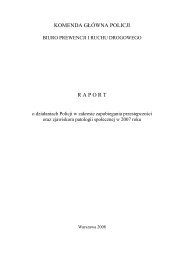ENGLISH
ENGLISH
ENGLISH
- No tags were found...
Create successful ePaper yourself
Turn your PDF publications into a flip-book with our unique Google optimized e-Paper software.
Research ReportsThe interviewThe interview was implemented with 13 responding parties:• Police (Ministry and regional)• Justice (Ministry and regional)• Women’s Support Services (Network and regional)• Intervention Centres (both regional)• Health Services (Network and regional)• Child Protection (regional)• Immigrant Women’s services (both regional)Nine women and five men were involved with the interviews and all core agencies were covered as well as the different levels(state and region).Identifying high risk victimsOf the 13 interviewed parties, 12 stated that they identified high risk victims of gender-based violence in intimate partnerships,with one restriction, however: ’They don’t use the term ‘high risk victims‘, and they don’t focus on these women. But they doassess dangerousness.’ 3Another respondent explained:’The Austrian Ministry of Interior started a programme for high risk victims just one month ago. This programme is for all kindsof victims. High risk victims will be protected in the same way as witnesses of high risk (Witness Protection Programme =Zeugenschutzprogramm). The case worker decides if a victim is at high risk and refers the victim to the programme.’As 12 participants added, this identification is based on the personal contact with the victim and with her direct involvement.Written reports are additionally used by 8 organisations, 1 uses evidence at the scene of crime as well, and 7 also take thedegree of severity of the injuries into consideration. Four respondents improve their state of information about the victim’sendangerment by staying in contact with other institutions (women’s shelters, intervention centres etc.).When asked if any risk assessment instruments are used within this process, 8 respondents gave a positive answer and 5answered ’no’. In one organisation this tool was never needed, 4 do not know any such tools, and one explained:’First, they use the ’4-eye method’, which means that 2 advisors talk to the client (in every case assessed). Second, cases arediscussed with the supervisor. They have additional instruments for children, but not for adult women.’Those respondents who use tools of risk assessment name the following tools:• Big 26 of the DAIP, in 3 organisations• Danger Assessment (DA) by Campbell, in 4 organisations• SARA, in 2 organisations• other instruments, in 1 organisation• self-developed instruments, in 3 organisations.Only 2 organisations use just one instrument, the others apply at least 2 of them (Big 26 and DA; DA and SARA). What isinteresting is the sequence of application as described by one participant: ’We use Big 26 systematically; if this results in many‘yes‘ answers, then we do a further assessment with DA Campbell or others.’3Interviewer’s noteP 22 | PROTECT | Good practice in preventing serious violence, attempted homicides, including crimes in the name of honour, and in protecting high risk victims of gender based violence






